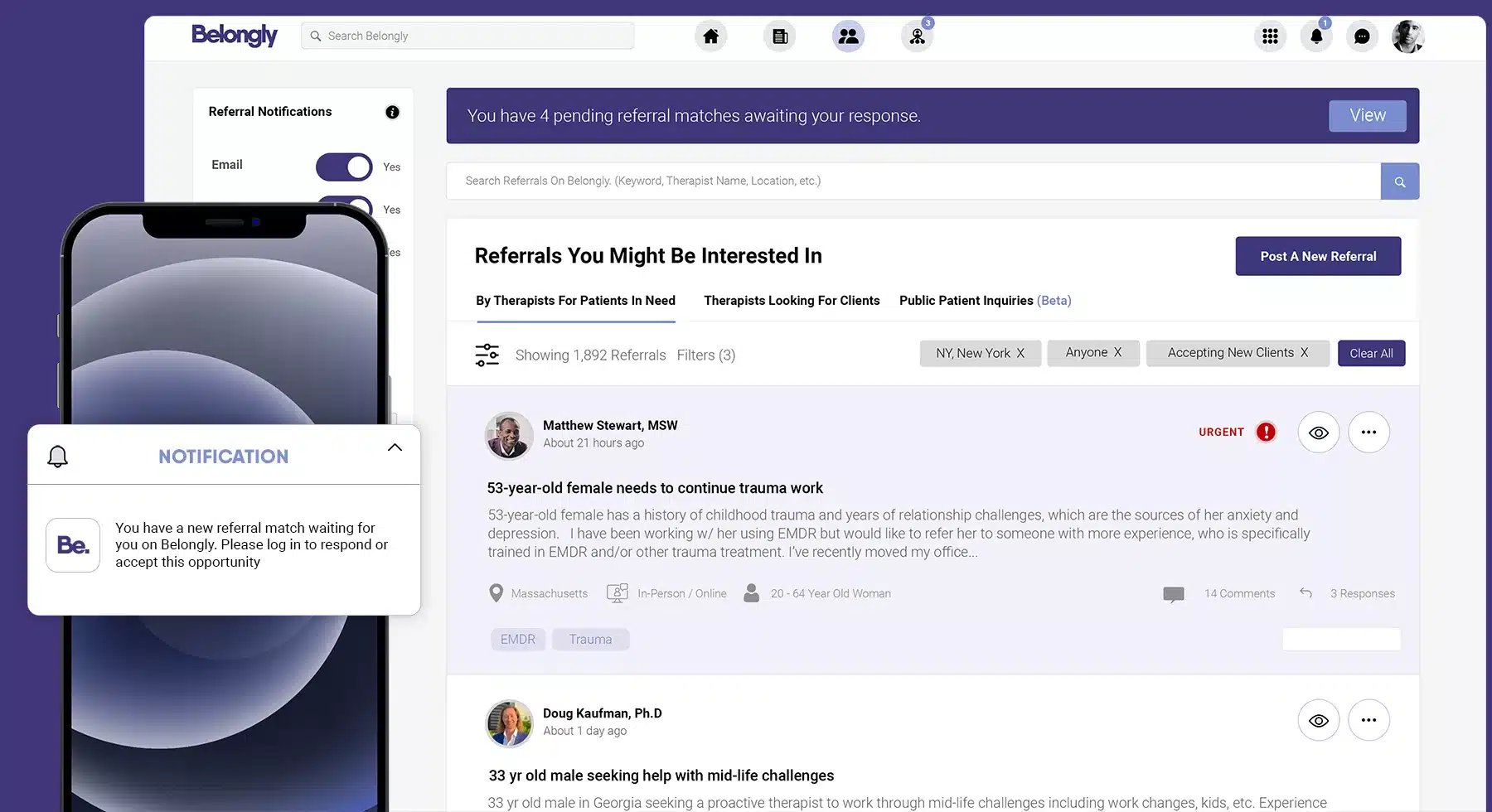Imagine being a patient who has made the difficult and courageous decision to start therapy. You open up your browser and type in “therapists near me.” But the list of results doesn’t give you much to go on— name, address, phone number, and, if you’re lucky, a website with a photo and bio. How do you narrow it down to the therapist that’s right for you? It feels like finding a needle in a haystack.
You can make sure you’re the needle in the internet haystack by crafting a unique and compelling online presence. Here are some ways to create a digital presence that speaks to your ideal patient, builds brand recognition, and generates referrals:
Create a Therapist Profile That Packs a Punch:
How do you make sure that your therapist profile stands out from the crowd? Whether you list on Psychology Today, Good Therapy, or another online directory, experts advise the following:
- Speak directly to your client–
You might think that your profile is where you share information about yourself, your skills, and your qualifications. But the most effective profiles favor the use of “you” over “I, me, and my.” Believe it or not, patients don’t care about your degree or license. They are looking for 2 things when they read your profile: First, will this person understand what I am going through? And second, can this person help me? Keep these questions in mind when you write your profile. For example, instead of saying, “I treat depression,” ask “Are you tired of struggling to get through the day? I help people rediscover the joy that is missing from their lives.”
- Focus on ONE ideal client–
Some therapists opt for a “scattershot” approach when writing their profiles– for example, “I treat adults, children, and families with a variety of issues including anxiety, depression, and substance abuse.” But it’s impossible to connect with all these types of patients in 250 words. Instead, imagine one ideal client and write to that person only.
- Get professional with your photo–
If you are like most therapists, posing for headshots isn’t at the top of your list of pleasurable activities. But before you try to repurpose that pic from your last vacation, consider the fact that your profile photo is the first thing potential patients will see. You want their initial impression to be one of professionalism and trustworthiness. Choose a neutral background, dress as you would for a therapy session, and smile! Opt for a close-up shot versus a full-length feature, so that patients can see your face in all its empathetic, approachable detail.
- Don’t forget to add a video–
A video adds a dynamic and personal touch to your professional identity. By hearing your voice and watching your body language, patients can better imagine what therapy sessions with you might feel like. This helps them determine whether you will be a good fit and reduces any anxiety they might have about starting treatment. Short videos that convey warmth, expertise, and credibility increase the likelihood that patients will book an initial consult.
- End with a call-to-action (CTA)–
A call-to-action prompt lets your patients know how to take the next step in booking an appointment with you. Again, this should speak directly to your ideal client and echo your profile’s overall message. For example, “When you’re ready to start thriving as opposed to merely surviving, I’m here to help. Call or email for a free 15-minute consultation to see if I am a good fit for you!”
Boost Your Brand:
The idea of branding might seem best suited to clothing lines and household products, but creating a consistent, recognizable brand is another way to differentiate yourself from other therapists. At its most basic, branding involves creating a unique identity that represents who you are, what you stand for, and what you offer. It helps clients to determine what to expect when working with you. For example, using empathetic language in your online content demonstrates understanding and compassion. Sharing appropriate personal anecdotes conveys relatability. For a step-by-step guide on creating an effective brand, see our post “Why You Need a Brand and How to Create One.”
Create Compelling Content with Client Testimonials:
What makes for compelling, online content? Real-life success stories that resonate with prospective clients. By sharing the experiences of former patients, (with their permission, of course), you can showcase the positive impact of your work without having to sing your own praises. Client testimonials provide patients with a glimpse into what therapy has to offer and reassure them that they are not alone in their journey toward healing and personal growth.
Become an SEO Savant:
Of course, even the most well-crafted content won’t differentiate you from the pack if clients can’t find it. That’s why you need search engine optimization or SEO. Search engines like Google use algorithms, or automated programs, to cull search results from the vast database of the internet. Your goal as a therapist is to convince Google’s algorithm that your website is the most relevant to your client’s search so that it ranks on the first page of results. SEO helps you do this.
Two examples of easy-to-employ SEO strategies are backlinks and keywords. Backlinks are links to your site from other websites. The more reputable sites that link to your website, the higher your site ranks. Keywords are words and phrases that indicate what your website is about. They are the search terms that clients are most likely to enter when researching your services.
For more on using SEO to optimize your online presence, see our therapist guide here.
Keep Reading
Want more? Here are some other blog posts you might be interested in.










